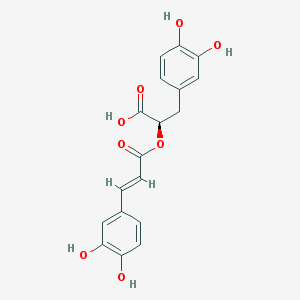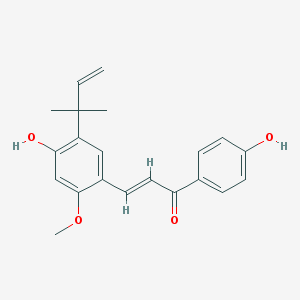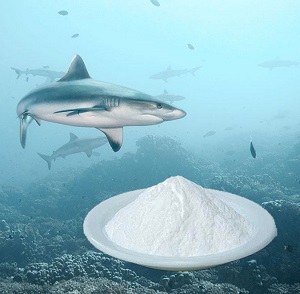Description
Rosmarinic acid is a caffeic acid and 3,4-dihydroxyphenyllactic acid derivative. It is most frequently found in Boraginaceae species and the Lamiaceae subfamily Nepetoideae. It is a red-orange powder that is barely soluble in water but highly soluble in the majority of organic solvents. Rosmarinic acid is found in culinary plants such as perilla (Perilla frutescens L.), rosemary (Rosmarinus officinalis L.), sage (Salvia officinalis L.), mint (Mentha arvense L.), and basil. (Ocimum basilicum L.). These herbs are frequently grown in gardens as kitchen herbs, and while they are used to add flavor to food, they are also known to have a number of powerful physiological effects.
Rosmarinic acid is a highly effective natural water-soluble antioxidant that has been shown to be nontoxic, safe, and free of side effects. It is extensively used in food, spices and condiments, pharmaceuticals, health care, cosmetic, and daily chemical sectors. We make rosmarinic acid that is water-soluble and can be added to beverages and water.
According to research, rosmarinic acid has a calming effect on skin and may be helpful in treating a variety of common skin issues.
Benefits:
- Antioxidant Properties: Rosmarinic acid is known for its ability to neutralize free radicals, which are unstable molecules that can cause cellular damage. This antioxidant activity can help in reducing oxidative stress in the body.
- Anti-inflammatory Effects: It has been observed to have anti-inflammatory properties, which can be beneficial in reducing inflammation and associated symptoms in various conditions.
- Neuroprotective Effects: Some studies suggest that rosmarinic acid might have neuroprotective effects, potentially beneficial in neurodegenerative diseases like Alzheimer’s.
- Antimicrobial Activity: It also exhibits antimicrobial properties against a range of bacteria and fungi, making it a compound of interest in fighting infections.
- Potential in Cancer Therapy: Early research indicates that rosmarinic acid might have anti-cancer properties, although more research is needed in this area.
Applications:
- Food Industry: As a natural preservative due to its antioxidant and antimicrobial properties, extending the shelf life of food products.
- Cosmetics: In skincare and beauty products for its antioxidant benefits, helping in skin protection and anti-aging formulations.
- Pharmaceuticals: Explored for its potential therapeutic applications in treating inflammatory diseases, neurodegenerative disorders, and as a supportive agent in cancer treatment.
Main Usage:
- Supplements: Often found in dietary supplements for its health-promoting properties.
- Herbal Remedies: Used in traditional medicine, particularly in herbal teas and extracts.
- Research Tool: In scientific studies to understand the mechanisms of antioxidants and as a model compound in pharmacological research.





